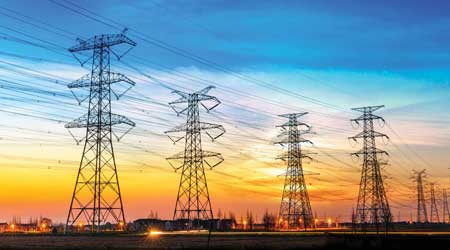 Generators and uninterruptible power supplies must provide protection to the electrical infrastructure in the event of voltage sags in the utility grid or a power outage.
Generators and uninterruptible power supplies must provide protection to the electrical infrastructure in the event of voltage sags in the utility grid or a power outage.UPS: Maximizing Performance Life
Facility needs, equipment considerations and technician effectiveness all play a role in providing reliable operation of key components.
The role of uninterruptible power supplies (UPS) and generators in the reliable and efficient operations of institutional and commercial facilities has expanded in recent years. In the world of critical facilities, UPS and generators serve as the first line of defense against downtime in an electrical system for facility loads.
These components must provide a robust level of protection to the electrical infrastructure in the event of voltage sags in the utility grid or of a power outage. These systems are essential for ensuring the safe, dependable operation of data centers and other server installations.
To achieve these goals, maintenance and engineering managers need to establish a comprehensive inspection, testing and maintenance program to address the needs of UPS and generators. Managers must equip technicians with the technology to carry out daily monitoring, and they need to keep an eye on the energy considerations related to these critical components.
Strategies and tools
UPS and generators require constant maintenance and optimal upkeep in order for facilities to maximize equipment performance lives. Among the basic checks that technicians must carry out on UPS and generators are making sure the components have proper ventilation, keeping the units free from debris, and conducting frequent visual inspections.
Often, though, these pieces of equipment require pre-coordinated procedures by qualified service personnel wearing the appropriate personal protective equipment in order to ensure proper operation.
When dealing with a generator or a UPS, having a preventive maintenance contract with the vendor or manufacturer can allow for annual or semi-annual visits from a certified technician, who can verify general operation of the facilities equipment. Confirming status indication, verifying that alarms and shutdowns are within tolerant conditions, inspecting batteries or basic components —including filters, drive belts, capacitors, and rectifiers — and performing basic operation of user interface are among the tasks technicians can perform.
By conducting infrared or thermal imaging of the cable terminations and copper bus connections, technicians can identify hot spots within the electrical system. Through the use of high-resolution imaging equipment, facilities and service personnel also can identify overheating electrical equipment before the problem is visually obvious and manifests into an even larger and more expensive situation.
Related Topics:














